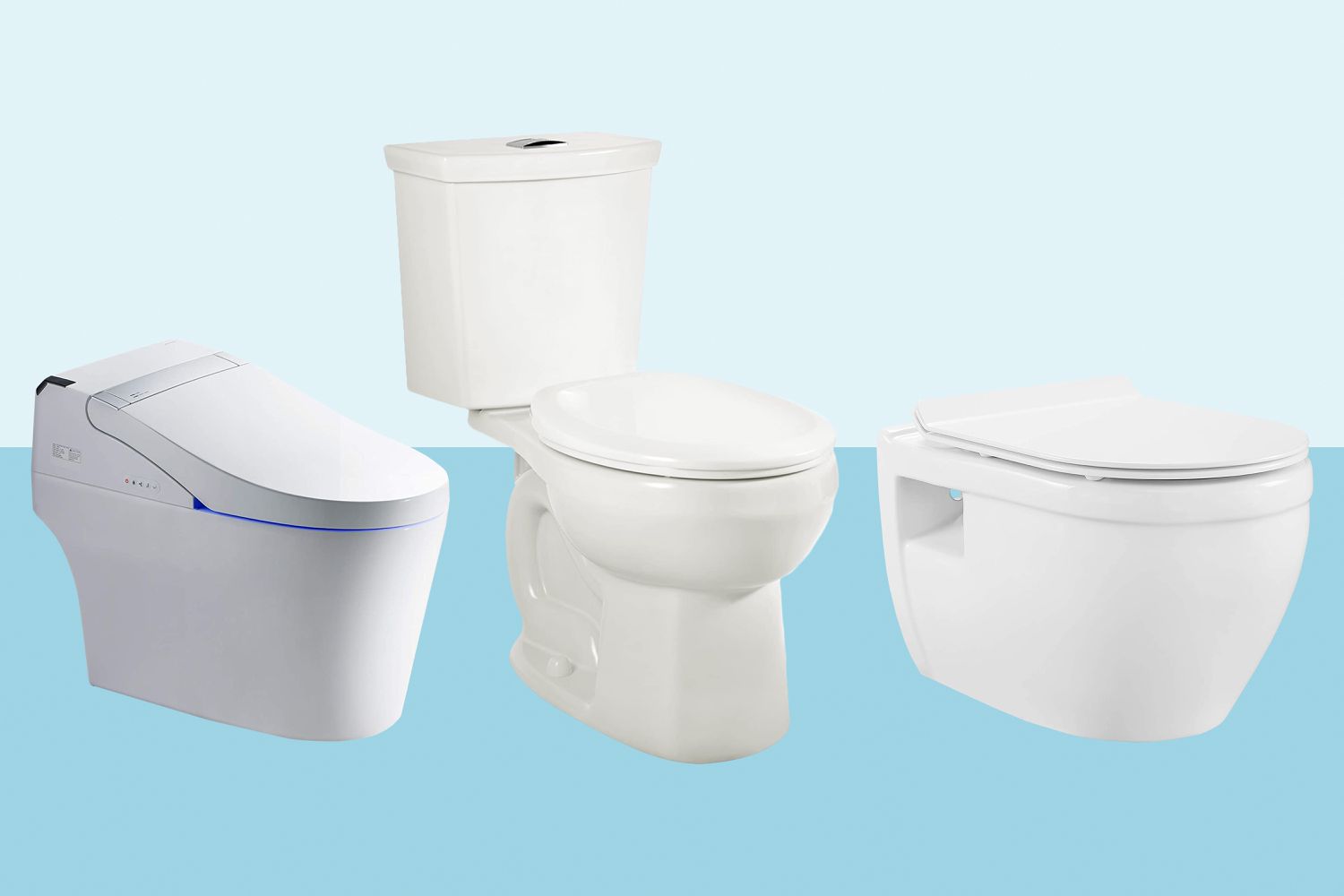When it comes to toilet flappers, there are several types available for different toilet models. The three main types are seat disk, tank ball, and rubber.
Identifying the type you need is as simple as removing the top of your toilet tank and taking a look. Toilet flappers are a key component of any toilet’s flushing system, responsible for regulating water flow. Having the correct type of flapper installed is crucial for efficient and leak-free operation.
Different toilet models may require different flapper types to ensure a proper fit and function. Understanding the specific type of toilet flapper you need can make bathroom maintenance and repairs easier. This guide will help you explore the different types of toilet flappers available, their characteristics, and how to identify the right fit for your toilet, allowing for a seamless and hassle-free selection process.
Understanding Toilet Flappers
How A Toilet Flapper Works
A toilet flapper is a vital component inside the toilet tank that controls the flushing mechanism. It is designed to seal the flush valve, preventing water from continuously flowing into the bowl.
Function Of The Flapper
The principal function of the toilet flapper is to create a tight seal over the flush valve so that water remains within the tank until a flush is triggered. When the toilet handle is pressed, the flapper lifts, allowing the water to rush from the tank into the bowl.
Importance Of Flapper Types And Sizes
Choosing the right flapper type and size is crucial for the optimum performance of your toilet. Different toilets require specific flapper types and sizes to ensure a proper seal and efficient flushing. The wrong flapper can lead to water wastage and continuous running or leaking of the toilet.
Different Types Of Toilet Flappers
Toilet flappers are essential components of the toilet’s flushing system. They come in various materials and designs, each with its own set of advantages and disadvantages. Understanding the different types of toilet flappers will help you choose the right one for your toilet’s needs.
Rubber Flappers
Rubber flappers are one of the most common types of toilet flappers. They are durable and provide a tight seal over the flush valve, preventing water from escaping the tank. However, they can deteriorate over time due to exposure to chemicals present in cleaning products.
Advantages
- Durable
- Provide a tight seal
Disadvantages
- Can deteriorate over time
Plastic Flappers
Plastic flappers provide rigidity, allowing them to connect to the overflow tube. They are less susceptible to degradation from cleaning products, but their rigid nature may affect their sealing capabilities over time.
Pros
- Resistant to degradation from cleaning products
Cons
- Rigid nature may affect sealing capabilities
Adjustable Flappers
Adjustable flappers offer the flexibility to adjust the water usage per flush. They allow users to control the volume of water released during each flush. However, their intricate mechanisms may require more frequent maintenance.
Benefits
- Flexibility in adjusting water usage
Considerations
- May require more frequent maintenance
Choosing The Right Toilet Flapper
When it comes to ensuring that your toilet operates at its best, selecting the right toilet flapper is crucial. The flapper is a small yet vital component of your toilet’s flush system, responsible for creating a watertight seal and facilitating the flushing process. To choose the perfect toilet flapper for your needs, consider the following key factors.
Factors To Consider
Before purchasing a toilet flapper, it’s essential to consider various factors that will impact its performance and longevity. Size and compatibility and budget and longevity are two primary aspects that can influence your decision.
Size And Compatibility
Ensuring that the toilet flapper you choose is the right size and compatible with your toilet model is crucial. Different toilets may require specific flapper sizes to establish a secure seal and prevent water wastage. Additionally, consider the compatibility of the flapper with your toilet’s flush valve to guarantee a seamless fit.
Budget And Longevity
Balancing your budget with the expected longevity of the toilet flapper is essential. While some flappers may come at a higher initial cost, they might offer greater durability, reducing the need for frequent replacements and potential maintenance expenses in the long run. It’s crucial to weigh the initial investment against the anticipated lifespan of the flapper.
Comparing Popular Flapper Options
When comparing popular flapper options, consider the material, design, and specific features offered by different brands. Factors such as resilience to chemicals and resistance to deterioration due to prolonged water exposure can significantly impact the performance and durability of the flapper.
Brands And Pricing
Researching reputable brands and comparing their pricing can provide valuable insights into the available options. Additionally, exploring customer reviews and product specifications can help you narrow down your choices and make an informed decision when selecting a toilet flapper.
Replacing And Troubleshooting
When troubleshooting toilet flapper types, it’s essential to identify the right one to replace the old flapper with. Consider the differences between rubber and plastic flappers, as well as the various options available, such as seat disk, tank ball, and rubber flappers.
It’s important to choose the right type to ensure a proper seal for preventing water leakage.
Fixing Common Flapper Issues
Leaks And Clogs
Maintenance Tips
Step-by-step Flapper Replacement
Diy Guide For Installation
“` Replacing and Troubleshooting Toilet Flapper Types When it comes to maintaining your toilet, understanding the ins and outs of toilet flappers can save you time and money. From fixing common flapper issues to troubleshooting leaks and clogs, having the right knowledge can make the process easier. In this guide, we will explore different types of toilet flappers and provide maintenance tips, a step-by-step flapper replacement guide, and a DIY installation guide to help you keep your toilet in top condition.Fixing Common Flapper Issues
Toilets can experience various flapper issues, such as constant running, incomplete flushes, or water leaks. These issues can be caused by a deteriorating flapper that no longer forms a proper seal over the flush valve. Inspect the flapper and flush valve to identify any damage or misalignments. Sometimes, the flapper chain may be tangled or too long, preventing the flapper from operating effectively. Ensure that the chain is properly adjusted and not tangled to allow the flapper to close completely.Leaks And Clogs
Toilet flappers are prone to developing leaks, resulting in water wastage and potential toilet clogs. Regularly check the flapper and the flush valve for any signs of wear or accumulation of mineral deposits. A worn-out flapper may not seal properly, resulting in water leaks. Additionally, mineral deposits can hinder the flapper’s movement, leading to clogs and inefficient flushing. Clean any buildup and consider replacing the flapper if necessary.Maintenance Tips
Maintaining your toilet flapper is essential for preventing costly repairs and water wastage. Regularly clean the flapper and flush valve to remove any mineral deposits. Furthermore, adjust the flapper chain length to ensure smooth and complete flushes. It is also beneficial to consider using a toilet flapper made of durable materials that resist deterioration from water and cleaning products. Perform routine maintenance to prolong the lifespan of your toilet flapper and maintain water efficiency.Step-by-step Flapper Replacement
When it comes to replacing a toilet flapper, it can be a straightforward process when following a simple step-by-step guide. Start by turning off the water supply to the toilet and flushing to drain the tank. Remove the old flapper and clean the flush valve seat to ensure a proper seal for the new flapper. Afterwards, install the new flapper and adjust the chain for optimal performance before turning the water supply back on. Regularly performing this maintenance task can help keep your toilet functioning effectively.Diy Guide For Installation
Many homeowners prefer the DIY approach when it comes to installing a new toilet flapper. To begin, ensure you have the correct flapper size and type for your toilet and read the manufacturer’s instructions. Carefully follow the step-by-step installation guide provided with the new flapper to ensure a proper and secure fit. After installation, test the flush to confirm that the new flapper is operating effectively. With the knowledge of common toilet flapper issues, troubleshooting leaks and clogs, and proper maintenance and replacement techniques, you can ensure your toilet remains in top condition. Regular care and attention to your toilet flapper can contribute to a more efficient and longer-lasting plumbing system.:max_bytes(150000):strip_icc()/different-types-of-toilet-fill-valves-4094288-hero-36904464b8984347843e4311c6a26769.jpg)
Credit: www.thespruce.com
Frequently Asked Questions For Toilet Flapper Types
How Do I Know What Kind Of Toilet Flapper I Need?
To determine the type of toilet flapper needed, check the existing one for its size and material. Additionally, consider the brand and model of the toilet to ensure compatibility. You may also consult the toilet’s manual or contact the manufacturer for further assistance.
What Is The Difference Between A Toilet Tower And A Flapper?
A toilet flapper is a rubber mechanism that seals the flush valve, while a toilet tower regulates water flow.
How Do You Fix A Leaky Toilet Flapper?
To fix a leaky toilet flapper, follow these steps: 1. Check the flapper at the bottom of the tank. 2. Turn off the water supply. 3. Adjust or replace the flapper. 4. Install a new flapper and turn the water back on.
5. Check for leaks in the bowl.
What Is The Difference Between Rubber And Plastic Toilet Flappers?
Rubber flappers provide a tight seal, while plastic flappers offer rigidity to connect to the overflow tube.
Conclusion
Selecting the right toilet flapper is crucial for maintaining a properly functioning toilet. With various types available, it’s essential to consider factors such as material and size. By understanding the differences between seat disk, tank ball, and rubber flappers, you can make an informed decision for optimal toilet performance and water efficiency.

